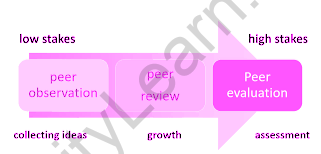Table of Contents

Teamwork is a necessary technique that establishes effective decision-making and idea creation strategies. In this regard, evaluating group members’ performances and orientations, as well as their engagement and assistance in achieving a common goal, is crucial. Various ways can be used to achieve the goals of building a peer review system to monitor a group’s work. Attendance at a group meeting, useful contributions, unambiguous information, listening attention, project review, completion, the autonomy of thoughts, commitment, and mood, among other things, are all important in completing such a task. In order to build recommendations for how these groups operate, this assessment offers an evaluation method based on these variables. The debate evaluates the challenges inside the group, such as organization, punctuality, and leadership as these ideals are regarded.
Evaluation Techniques

The evaluation could begin with an assessment of individual meetings in which group members are either present or absent. Essentially, the team members’ cooperation is determined by their cooperation. In reality, concepts that have been developed significantly via the assessment of other people’s perspectives or that have been subjected to heated discussions may be powerful. Arguments among group members who have a shared purpose provide not only opportunities for different thoughts, but also guidance for better and more educated suppositions. The group’s everyday operations, such as listening, criticism, and work completion, are used to evaluate peer performance. Peer evaluation is a method of conducting a successful teaching review using questionnaires, observations, and interviews (Gil & Vista, 2001). The purpose of this evaluation is to ensure that all members of the group understand the value of teamwork and sociability throughout this activity.
It also aids in the development of professionals’ disciplinary knowledge, particularly in the workplace. The knowledge gleaned from group work allows for the enhancement of a successful learning culture. People can convey ideas in this manner without causing debates or conflicts. The group, on the other hand, must be made up of techniques for resolving conflicts and maintaining discipline. Course portfolios are a collection of student reports on the success of the teacher’s teaching as determined by the teacher (Beijaard, 2005). It takes the form of a written assessment of students’ response rate and comprehension of the material. Once a month, at the end of the course, this instrument is used. Because they have a chance to give proper evaluation responses as the interested parties, the students are involved in filling out the evaluation form to inform about their group’s activities. The information gathered from this exam aids in improving the delivery of the curriculum to pupils. It enables trainers or lecturers to alter student perceptions in accordance with anticipated learning outcomes. Group assessments may also be provided as quizzes in some situations. They are used by both professors and students to determine whether or not the pupils comprehended the parts of the lesson. The quizzes are given to students at the end of the class to see if they have grasped the material.
Knowing the students’ comprehension of subjects and command of group discussions allows the teacher to capitalize on their strengths and provide appropriate instruction to pupils. The students are given the results so that they can observe how their subject is progressing.
Approaching Problems with Creativity
A group may encounter difficulties during conversations or physical activities. These challenges should be tackled through creativity, in which participants are willing to give and devise reliable solutions. Disagreements stemming from problematic ideas, for example, may be handled by instructor research and investigation.
Thought and action independence
Each participant can develop leadership abilities by being able to make decisions and become self-sufficient when contributing to the subjects being discussed. This feature of the group can be evaluated by a questionnaire in which each member’s participation is documented. All participants in the debate should be included in effective teamwork.
Each member should have the opportunity and capacity to offer and support proposals based on the literature available. This independence, however, must be managed by a designated leader who directs talks and calls meetings to a halt when confrontations become infamous or unmanageable. The acts of the group must be aimed toward achieving the group’s goal.
Organizing a Group to Make Evaluations Easier
Participants, learning/action materials, and equipment sharing, among other things, are all part of the group setup. The members will be arranged according to their roles in order to organize the future group. For example, in the case of students, group members can be separated based on respective areas of work, schedules, competitive sides, or columns.
The arrangement of the groups can be determined by resources in order to promote successful peer evaluation. For example, a white whiteboard projection will be mounted on the front wall so that students can easily follow along with the illustrations. A fixed projector will be installed on the roof, guaranteeing that information is projected onto the multipurpose white whiteboard.
FAQs
What exactly is peer review?
Peer evaluation, also known as peer assessment, refers to the various ways in which students can share their creative work with peers for constructive comments, then update and improve their work based on that feedback.
What are the benefits of peer review in the classroom?
By both reviewing others and being reviewed, peer review can foster reflection on teaching and assessing procedures. Peer review both stimulates improvement of practice and shares current interesting practice, as teaching can be a solitary endeavour. Its main goal is to improve student learning.
What is the significance of peer review?
Peer assessment, also known as peer review, is an organized learning process in which students criticize and provide comments on one another's work. It teaches students how to assess and provide feedback to others throughout the rest of their lives, as well as how to identify opportunities for improvement in their own work.
What are the three main advantages of peer review?
The following are some of the benefits: Establishes the quality of the research based on the expert expertise of other researchers, avoiding the acceptance of faked work within a field of study. Provides helpful input to researchers so they can modify and enhance their articles before they are published.



